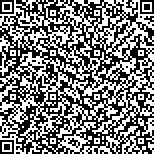| 引用本文: | 马爱军,柳学周,徐永江,梁友,庄志猛,翟介明,李波.半滑舌鳎(Cynoglossus semilaevis)早期发育阶段的摄食特性及生长研究.海洋与湖沼,2005,36(2):130-138. |
| |
|
| |
|
|
| 本文已被:浏览 2128次 下载 2323次 |

码上扫一扫! |
|
|
| 半滑舌鳎(Cynoglossus semilaevis)早期发育阶段的摄食特性及生长研究 |
|
马爱军1,2, 柳学周1, 徐永江1,3, 梁友1, 庄志猛1, 翟介明4, 李波4
|
|
1.中国水产科学研究院黄海水产研究所 青岛266071;2.农业部水生动物遗传育种和养殖生物学重点开放实验室无锡214081;3.中国海洋大学 青岛266003;4.莱州明波水产有限公司 莱州261416
|
|
| 摘要: |
| 采用实验生态学方法, 研究半滑舌鳎早期发育阶段的摄食特性及生长特性。结果表明, 半滑舌鳎初孵仔鱼在23°C水温条件下, 2–3日龄开口摄食, 开口后投喂轮虫。孵化后12日龄, 全长达到8–9mm 左右, 可摄食卤虫无节幼体。随着仔稚鱼的发育及摄食强度的增强, 表现出越来越明显的摄食节律。6日龄仔鱼在24h 内均有不同程度的摄食, 相对来说9:00、12:00、15:00、18:00 为其摄食率的高峰。16日龄稚鱼的摄食节律已出现较明显趋势, 9:00、15:00为其摄食率的高峰。26日龄营底栖生活后稚鱼, 由浮游生活方式变为底栖生活方式, 摄食率的高峰出现在18:00、24:00。半滑舌鳎的捕食能力随其生长逐渐增强, 6日龄仔鱼的平均摄食强度在摄食率高峰之后的2–3h内达到最高, 出现在12:00、18:00; 16日龄稚鱼在10:00–17:00 期间平均摄食强度相对较大。26日龄稚鱼, 捕食能力明显增强, 伴随着摄食率高峰的出现, 平均摄食强度也分别在18:00和24:00达到高峰。随着生活方式的转变, 半滑舌鳎摄食节律有着明显的变化: 早期的浮游生活阶段, 以白天摄食为主, 摄食高峰出现在白天; 营底栖生活阶段半滑舌鳎转为夜间摄食, 摄食高峰出现在夜间。半滑舌鳎不同发育阶段的日平均摄食率分别为: 6日龄仔鱼65%, 16日龄稚鱼39.7%, 26日龄稚鱼11%。随着仔稚鱼的发育, 个体生 长表现出越来越明显的差异。 |
| 关键词: 半滑舌鳎 早期发育阶段 摄食节律 生长 |
| DOI: |
| 分类号: |
| 基金项目:国家863计划项目资助, 2002AA603011号、2004AA603320号;农业部水生动物遗传育种和养殖生物学重点开放实验室资助, 2004-2007; 国家自然科学基金资助项目, 30271027号 |
附件 |
|
| STUDY ON FEEDING BEHAVIOR AND GROWTH OF TONGUE SOLE CYNOGLOSSUS SEMILAEVIS IN EARLY DEVELOPMENT STAGE |
|
MA Ai-Jun1,2, LIU Xue-Zhou1, XU Yong-Jiang1,3, LIANG You1, ZHUANG Zhi-Meng1, ZHAI Jie-Ming4, LI Bo4
|
|
1.Yellow Sea Fisheries Research Institute, Chinese Academy of Fishery Sciences, Qingdao, 266071;2.Key Open Laboratory for Genetic Breeding of Aquatic Animals and Aquaculture Biology of the Ministry of Agriculture, Wuxi, 214081;3.Ocean University of China, Qingdao, 266003;4.Laizhou Mingbo Aquatic Products Co. Ltd., Laizhou, 261416
|
| Abstract: |
| Feeding habits and growth characteristics of tongue sole Cynoglossus semiliaevis G nther in early development stage are studied, including feeding rhythm and feeding intensity. Results show that larva begin to eat rotifer about 2–3 days after hatching at water temperature 23°C. After 12 days from hatching, the larvae grow up to 8–9mm in total length, and can be fed with artemia. With the development of larva, feeding intensity increased and feeding rhythm became obvious. The 6-day old larva’s feeding intensity is the highest at 9:00, 12:00, 15:00 and 18:00. The tongue sole showed obvious feeding rhythm in post larva stage and before metamorphosis. Highest feeding intensity of post larva appears at 9:00 and 15:00. The post larva after taking benthonic style life have the highest feeding intensity at 18:00 and 24:00, with its life habit change from plantonic style to benthonic style. The catching ability of tongue fish also increases with the development. 6-day old larva get highest average feeding intensity at 12:00 and 18:00, which is 2–3 hours after the point of the highest feeding rate; while 16-day old post larva get the highest average feeding intensity at 10:00, 17:00, which is 1–2 hours after the point of the highest feeding rate. After living benthonic life, 26-day post larva’s catching ability increases obviously. Following the appearance of the highest feeding rate, the feeding intensity reaches the highest point at 18:00 and 24:00. Tongue sole have different feeding rhythm between plantonic style life and benthonic style life. A conclusion can be made that the tongue sole’s
feeding activity was higher in daytime in planctonic stage, while its feeding activity was higher at night in benthonic stage. This variation of feeding rhythm is caused by intrinsic factor, i. e., the development of physiological function. Tongue fish, before metamorphosis, have fro-mouth and its feeding rhythm appear at dayt ime. The feeding habits may be determined by visual sensation and tactual sensation in this stage. After living benthonic style life, it has undermouth, large number of olfactory plates and 3 laterlines. The feeding habits may be determined by taste sensation, and laterlines system in this stage. More experiments are planed to testify further.
Suitable food, feeding time and food density should be determined for tongue fish seedling according to tongue fish’s different feeding habit at different development stage. The tongue sole’s seed breeding tanks should be kept in suitable food density for 24h whole day during larva stage. And for post larva, the density of rotifer and artimea should be kept adequately from 8:00 to 20:00; for post larva after living benthonic style life, artimea and compound feed should be kept adequately from 15:00 to 3:00. During other time, the food density can be decreased in order to save food and keep water quality good.
The best feeding amount tested was 65%, 39.7% and 11% of the body weight of 6-day old larva, 16-day old
post larva and 26-day old post larva respectively. The size differences among the tongue fish become obvious with its development. The seedlings of tongue fish don’t bite each other, which probably because of their special benethic feeding habit and their under-mouth feature. |
| Key words: Tongue sole Cynoglossus semiliaevis , Early development stage, Feeding rhythm, Growth |
|
|
|
|
|
